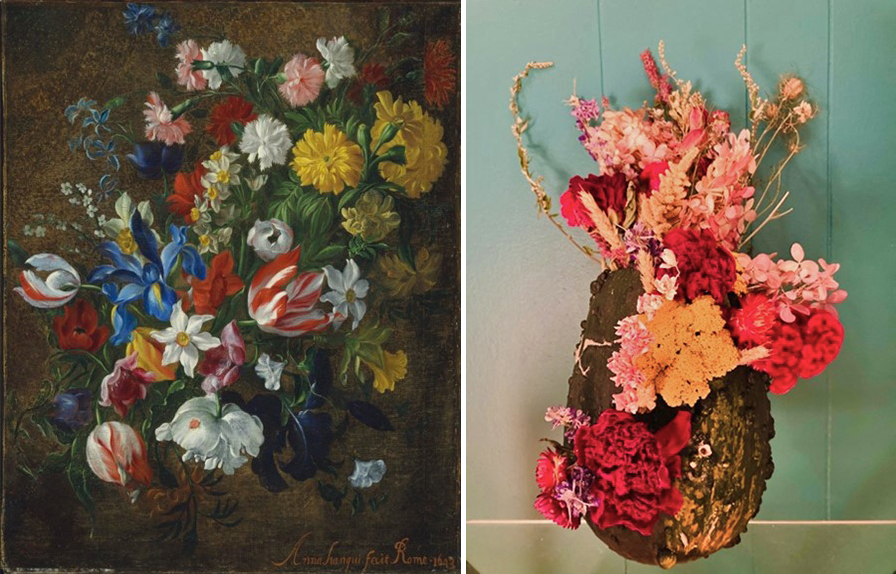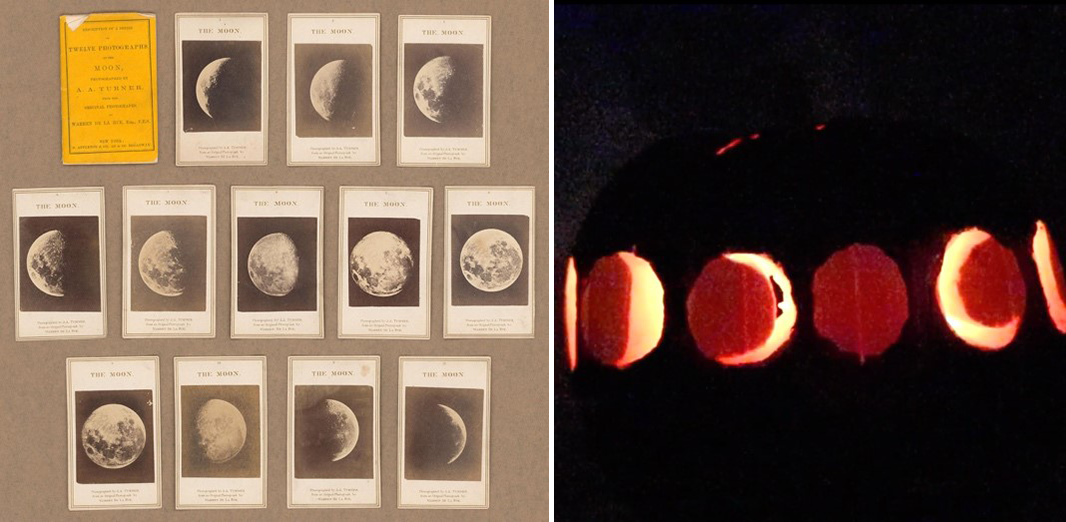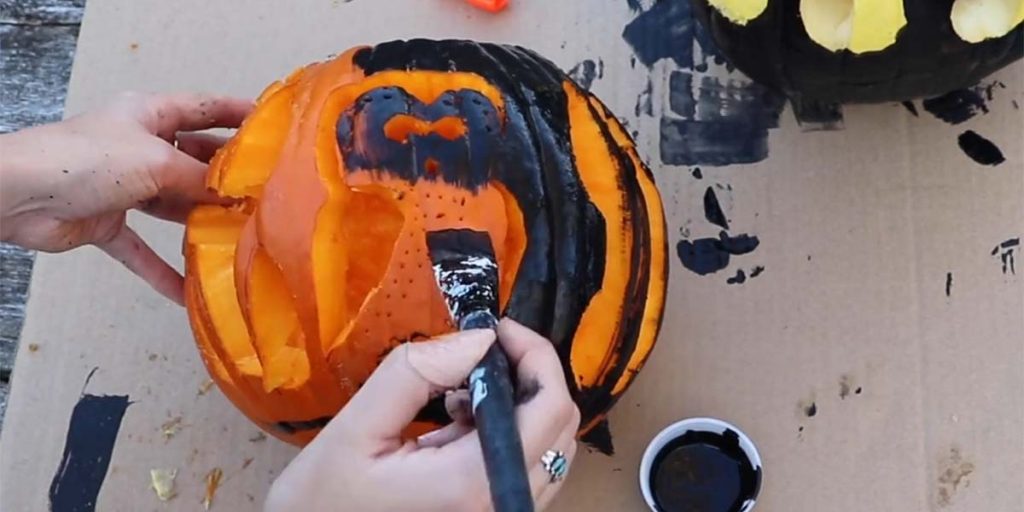By: Sarah Briggs ’14, Sabarsky Fellow
One of my favorite ways to spend time with a work of art, to look at it closely and understand something new about it, is to make art inspired by it. Sometimes that means bringing a sketchbook into a museum and drawing exactly what I see, and sometimes it means holding onto one element of an artwork that really struck me, and integrating it into an art project of a completely different medium than the original. No materials are off the table; any tool of artmaking can offer new insight, opportunity for contemplation, and the fun of working with something new or nostalgic. Some of my favorites are watercolors, crayons, and fine tipped pens.
But this time of year got me excited to explore an old favorite of creative whimsy: the pumpkin. Instead of going into Middlebury’s museum to wander from wall to wall looking for inspiration, I pulled up our online database. Clicking through the collection, I enjoyed stumbling upon works I have never seen before, and ended up with a long list of images that could be adapted to carved creations. Limited by time and how many pumpkins I can carry, I picked three, and enjoyed spending a little time with each of these works from the permanent collection.
You can witness the process in this time-lapse video, and see the finished comparisons in the entries below.
Anna Stanchi’s Tulips, Irises, Daffodils, Carnations, Hyacinths, and Other Flowers

Anna Stanchi belonged to a Rome-based family of artists who painted still lifes for esteemed Italian patrons like the Barberini, Chigi, and Medici families. Although little is known about the life or career of this accomplished painter, it is clear that she hoped to attract international clientele, for she signed the painting “Stanqui” instead of Stanchi—presumably to appeal to a French-speaking market and to maintain the correct pronunciation of her name. She signed at least one other painting in the same manner, suggesting her persistent attempt to reach an international audience. The elegantly striated tulips and carefully balanced diagonal composition further demonstrate Stanchi’s skillful awareness of international trends in still life painting, which may reflect her engagement with Dutch artists living and working in Rome in the 1640s and 50s.
—Object text by Carrie Anderson
Austin Augustus Turner’s Series of Twelve Photographs of the Moon

Early imaging of the Moon was difficult, as exposure times tended to be long, and the resulting daguerreotypes were expensive and easily damaged. In the mid-nineteenth century, however, photographic technology advanced to allow durable, inexpensive prints to be created more easily. Albumen (egg white) and silver nitrate prints on cardstock became popular to give, exchange, and collect. These lunar images would have been novel, inspirational, and educational.
Turner, who was an enterprising studio photographer in New York, re-photographed La Rue’s originals and sold the pirated images as a boxed set along with an informational packet.
The Moon is a constant companion, marking the cycles of life, but unreachable; mundane, but the source of myth and superstition; familiar, but nevertheless inspirational when observed in detail. Few nineteenth century people would ever have a chance to look at the Moon through a telescope, but photographs give a similar, unprecedented, magnified view, bringing the Moon closer to Earth.
—Object text by Wendy Shook
Greek Red-figure Glaux

A glaux (literally meaning “owl”) is a skyphos (drinking cup) with one handle vertical and the other horizontal, usually decorated with an arresting image of Athena’s iconic owl. The owl was also a frequent figure on Athenian coins.
Athenian owl cups were exported all over the Greek world during the fifth century B.C.E. Not surprisingly, they were also imitated locally, especially in Apulia in southern Italy. This phenomenon is indicative of the high esteem Athens and its culture enjoyed during the Classical period.
—Object text by Pieter Broucke
Try it yourself!
Explore our online collection for your pumpkinspiration. Then post a picture of your creation along with the artist and title of the artwork in the comment section below, or post it on social media and tag us @middartmuseum #pumpkinspiration.
Happy Halloween!
